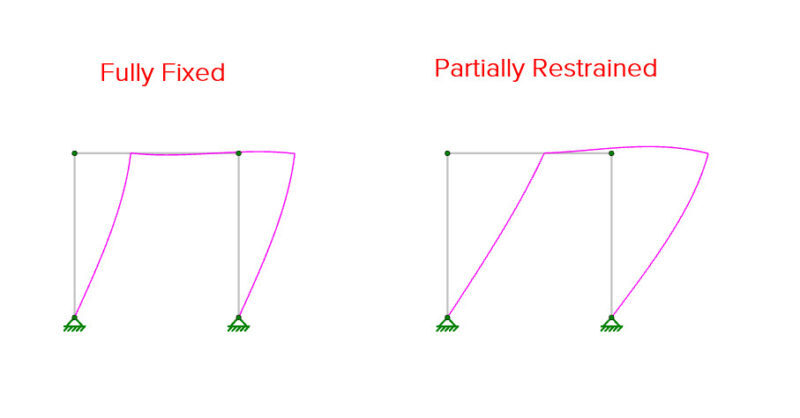What is the Tau b Factor and how does it affect my analysis?
When solving a RISA-3D model with hot rolled steel members under the AISC 360-05 (13th Edition) or AISC 360-10 (14th Edition) codes you may find...

In order to understand the interaction between plates and members it is important that you know the basics of Physical Members and Plate Connectivity. Remember that plates only connect to other elements at their corners, and you will instantly recognize why the model below will not work as intended.

In this model there are two plates, defined between members M2, M5, and M9. The moment in all three beams is zero though, because the surface load on the plates goes to their corners, which fall only on the girders and the columns. In order to get a more realistic one-way load distribution to the beams the plates actually need to connect to them (since plates do not connect to anything along their edges).

Above is a submeshed model. The moment diagram for member M9 is plotted on the right. As you can see, the plates are only connected to that member at its midspan, so it is being loaded with a single point load right in the middle. This is not realistic for how a slab would load this beam though, and is therefore an inadequate mesh. In order to get that realistic loading we need enough connection points between the plates and the members. The mesh shown below has adequate connectivity, and this is illustrated by a roughly parabolic moment diagram for M9.


Before reading this, be sure to check out the article linked below on X-Bracing. In RISA-3D, you can set a member to be tension-only by selecting...

1 min read
RISA-3D v17.0 now has the ability to model partial fixity member end releases. Partial fixity end releases can be utilized in RISA to model the...